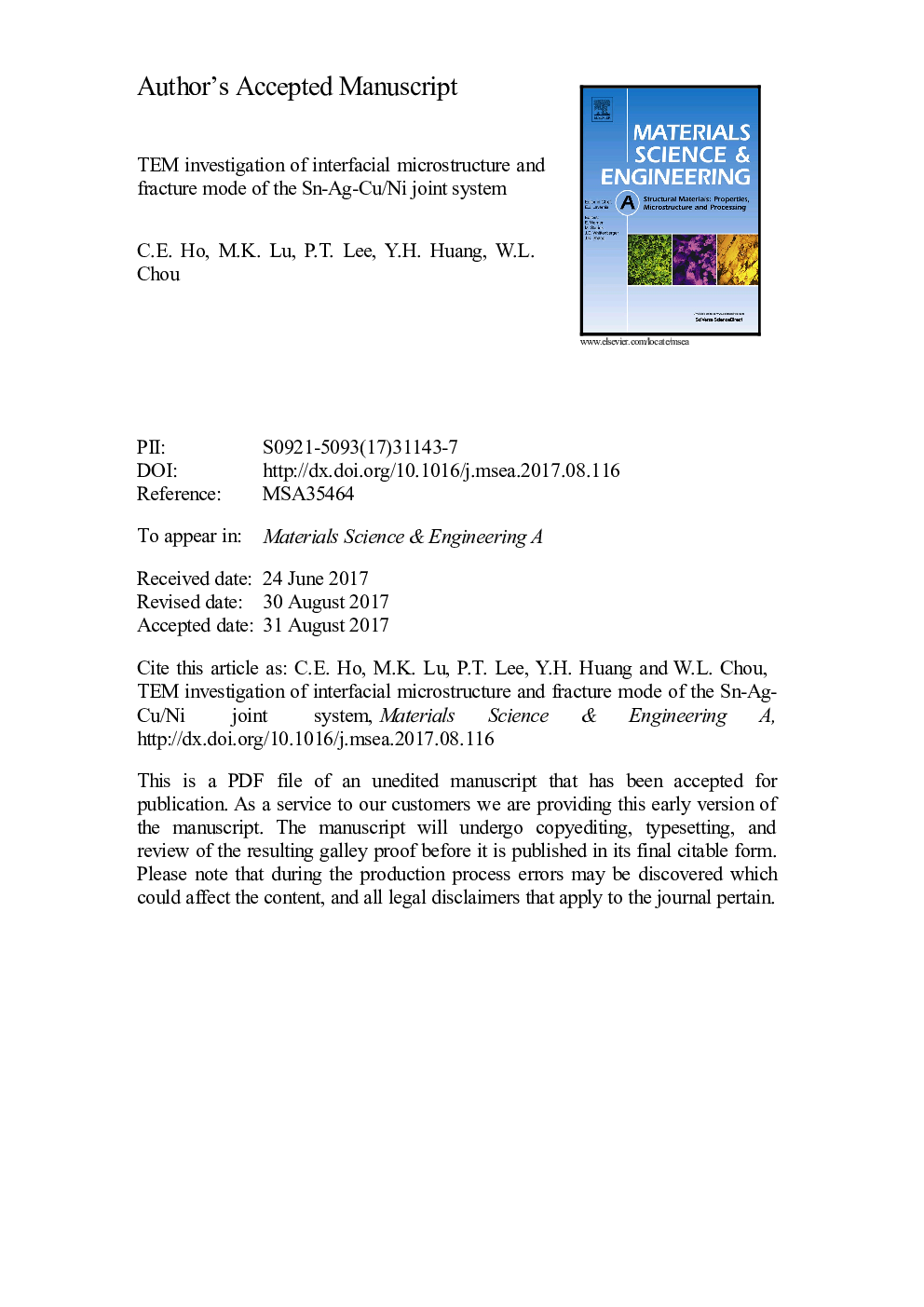| Article ID | Journal | Published Year | Pages | File Type |
|---|---|---|---|---|
| 5455188 | Materials Science and Engineering: A | 2017 | 36 Pages |
Abstract
The effects of Cu concentration (x) on the interfacial microstructure between a molten Sn-3Ag-xCu alloy and an electrolytic Au/Ni/Cu multilayer and its mechanical reliability were investigated via transmission electron microscopy (TEM) and high-speed ball shear (HSBS) testing. The x values were 0, 0.3, 0.4, 0.5, 0.7, and 1.0 (wt%). An increase in x caused an interfacial intermetallic compound (IMC) transition from a dense (Ni,Cu)3Sn4 layer (x = 0 and 0.3) to the coexistence of (Ni,Cu)3Sn4 and (Cu,Ni)6Sn5 (x = 0.4 and 0.5), and to a dense (Cu,Ni)6Sn5 layer (x = 0.7 and 1.0) after soldering reaction at 250 °C for 2 min. An increase in the reaction time enhanced the IMC growth and induced the nucleation of a (Ni,Cu)3Sn4 nanolayer beneath (Cu,Ni)6Sn5 in the high x case. The TEM and HSBS characterizations showed that a single, thin (Ni,Cu)3Sn4 layer grown at the interface possessed better shear resistance than a single (Cu,Ni)6Sn5 layer, and the presence of a dual layer structure of (Cu,Ni)6Sn5/(Ni,Cu)3Sn4 substantially degraded the mechanical properties of the joint interface. These observations indicated that the Cu concentration in Sn-3Ag-xCu alloy plays a crucial role in the interfacial reaction, which, in turn, dominates the mechanical reliability of microelectronic joints.
Related Topics
Physical Sciences and Engineering
Materials Science
Materials Science (General)
Authors
C.E. Ho, M.K. Lu, P.T. Lee, Y.H. Huang, W.L. Chou,
